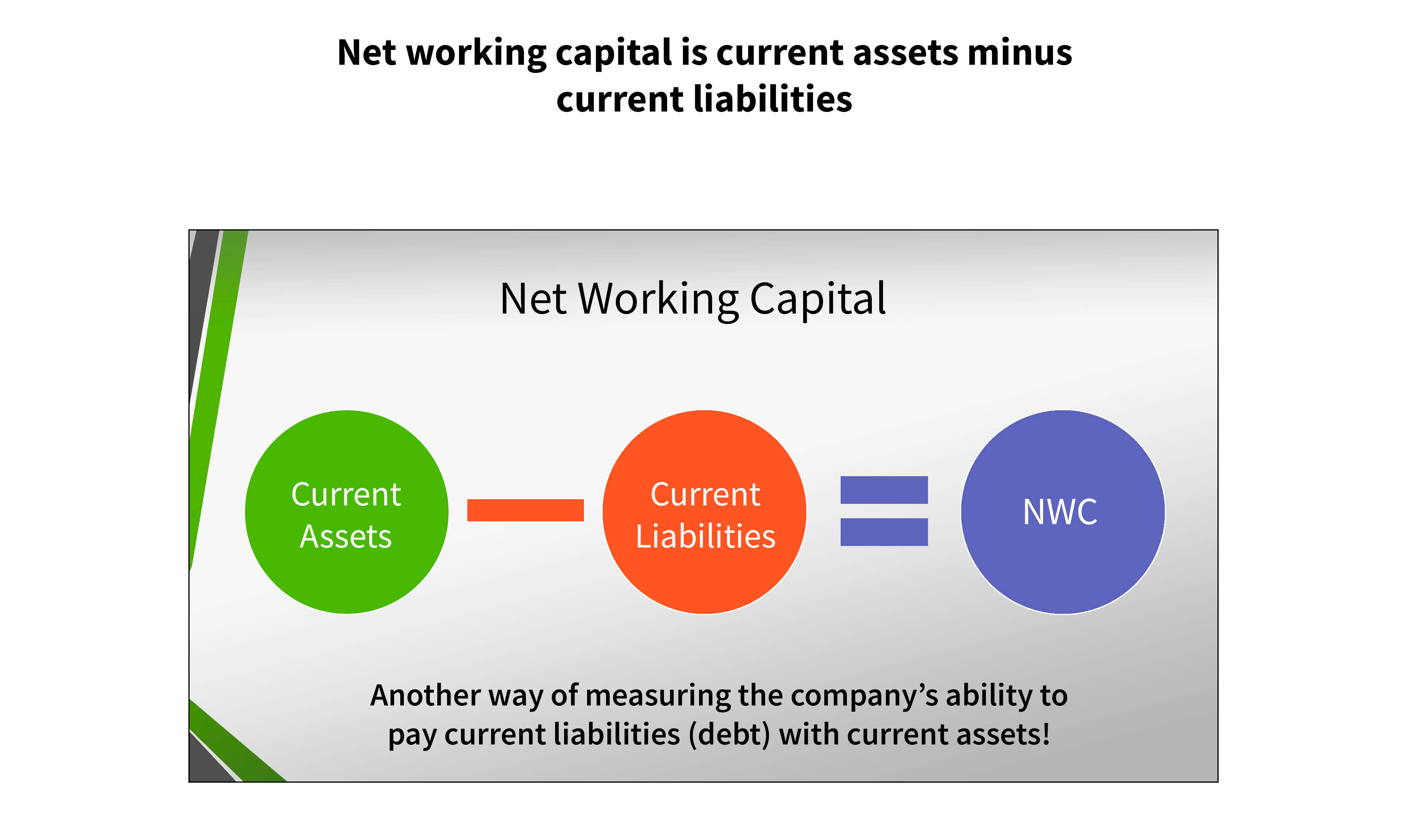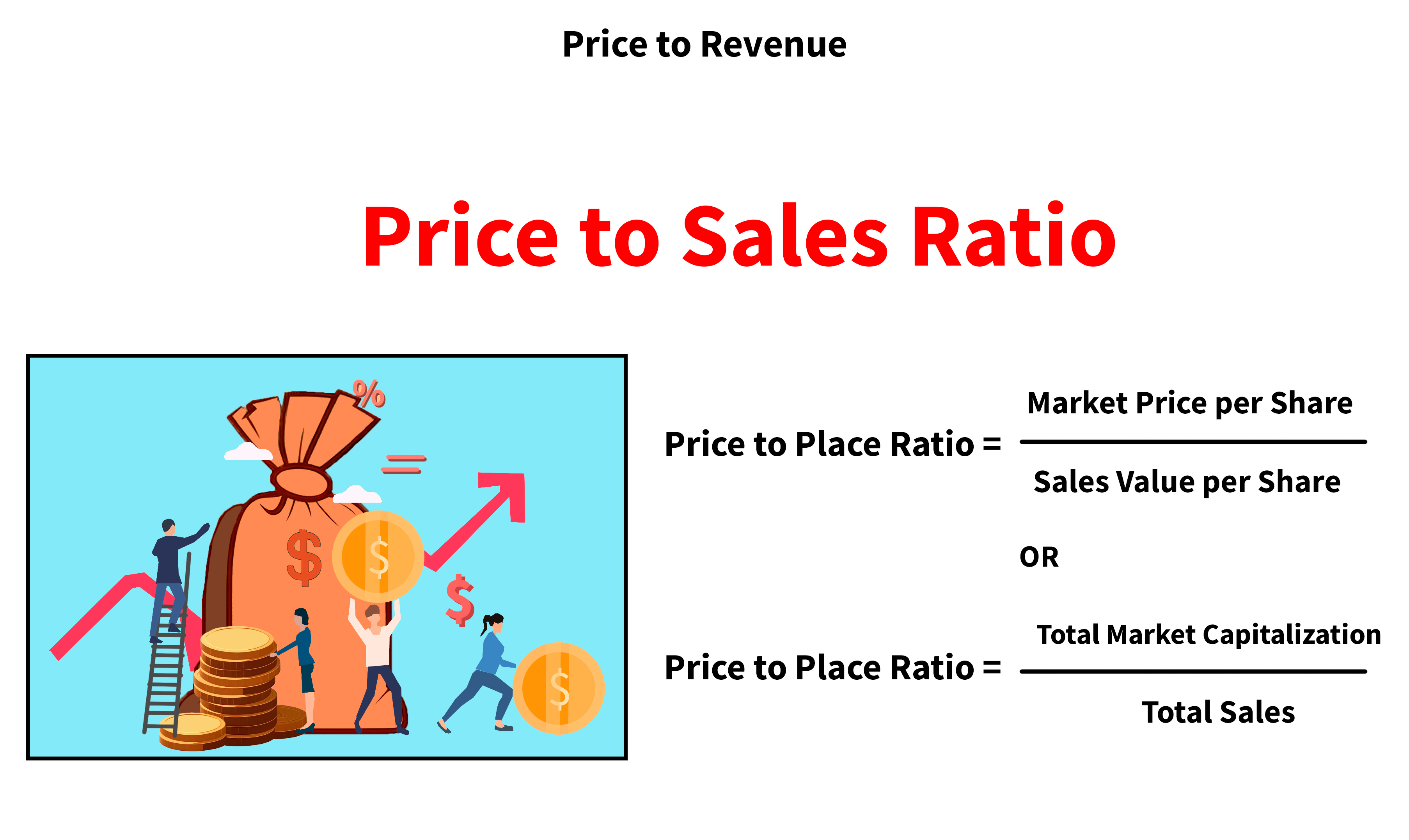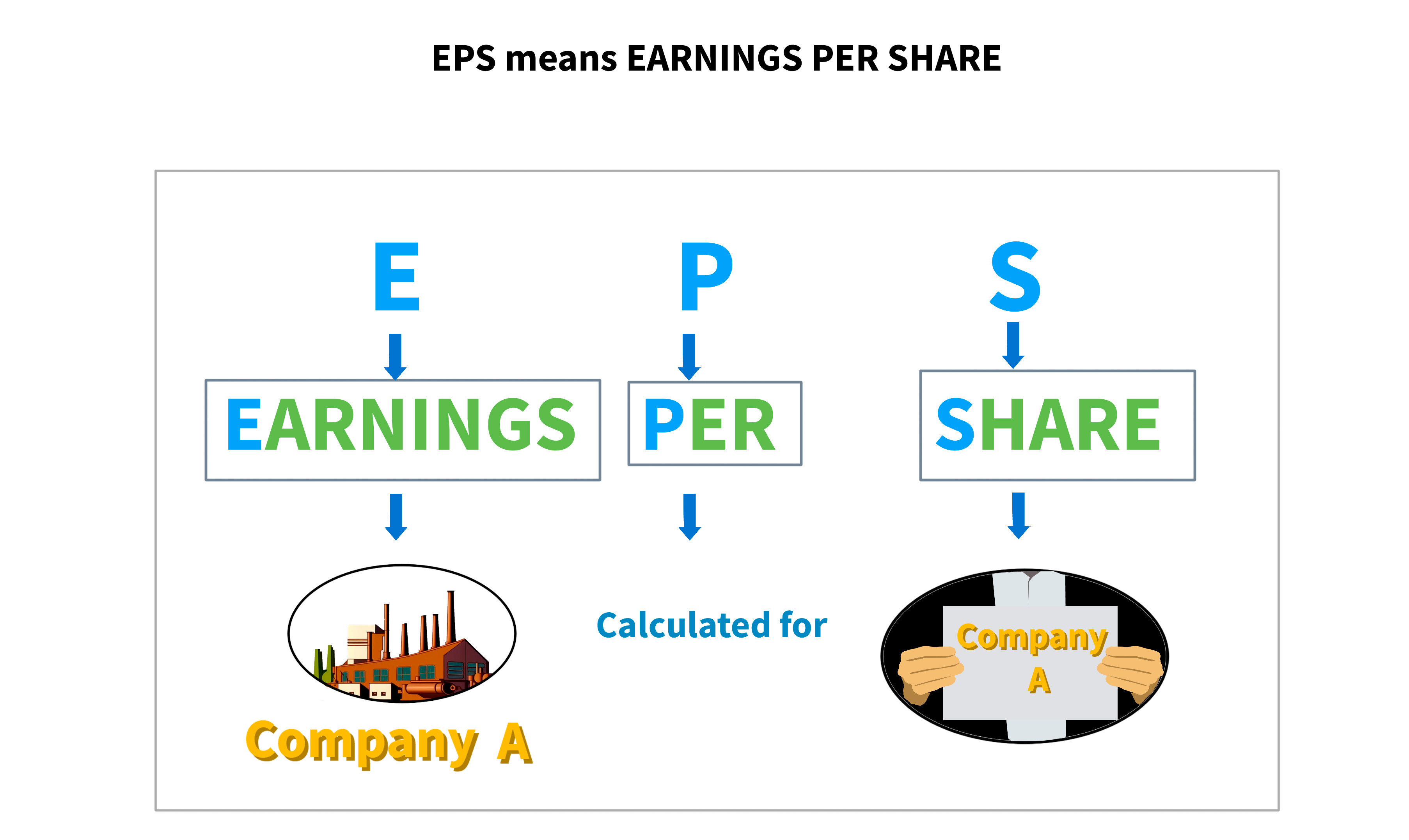The news expires very quickly on the stock market. What is most interesting is not the news itself, but rather the news of the markets. In order to see where we are and how the markets have varied this far, and how they may vary in the future. We used an incredible source on a regular basis which is from JP Morgan's documentation known as the guide to the market.
There are two versions: The American version and a more international version. In general, we focus on American figures when looking at figures since everything is driven by the United States.
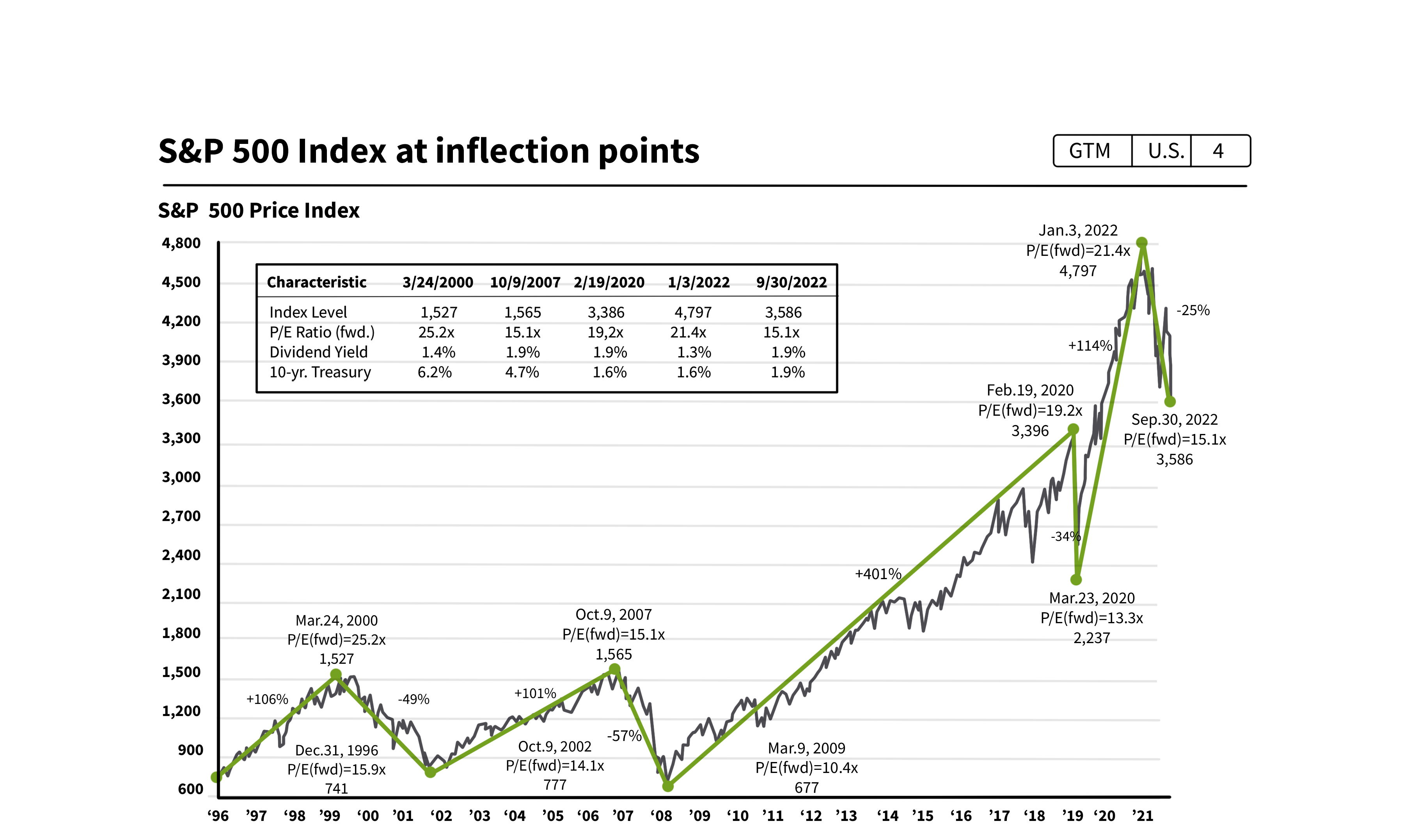
We often get false signals when we analyze European figures. For example, suppose Europe begins to recover but the United States enters a severe recession. You can be certain that what is happening in the United States will have a greater impact on the European economy and markets than what is happening in Europe. We will attempt to refine our vision over time, but we will begin with a broad view by simply examining the performance of the S&P 500.
With a short earnings ratio, we are 25% down from the highs at the beginning of the year. The PER forward is the short ratio on estimated earnings. If we stop at this simplistic vision, the future PER has dropped from 21 to 15, resulting in a 25% market drop and a sharp drop in the PER. This indicates that we are approaching a buying zone.
If you look closely at the variation of the market valuation, it is in particular how much a dollar of profit is valued:
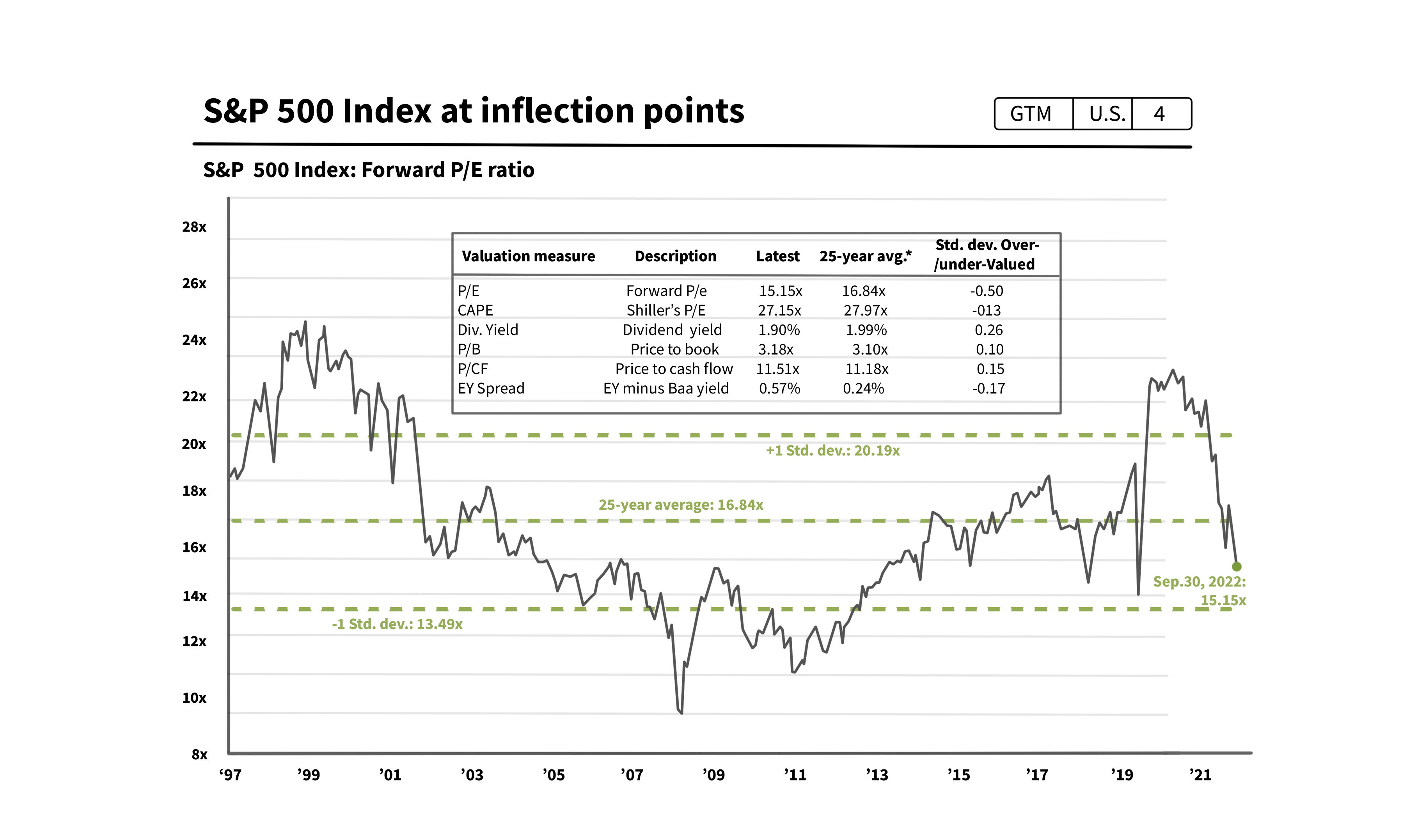
The estimated PER on earnings has decreased from 21 to 15. But nevertheless, based on the historical PER of 15, we are not at an all-time low. We're getting closer, and we're still below the 25-year average of 16.8 but with a historically low PER like in 2008 or 2011, and it would be less than 12. As such, if we only use this per, we can say that we are entering a low zone, but the market can still lose 20% if the PER falls from 15 to 12. There is nothing wrong with it, but you must exercise extreme caution when attempting to time the market or attempting to predict whether the market will continue to fall or rise using the PER.
That is typically true when we are looking for a low point, which is what most investors are doing right now. We must remember we can buy when the market has a low PER. For example, at 13, this per can go up to 20 without making money because it is a ratio, remember the price to profit so the PER can go up. Thanks to a rise in prices but it can also go up thanks to a fall in profits. We have to look at where these variations come from when we study market variations.
This is where JP Morgan starts telling us to give us super interesting figures because we see that analysts' profit forecasts for 2023-2024 are still very good overall, even after the 25% drop in the stock market index.
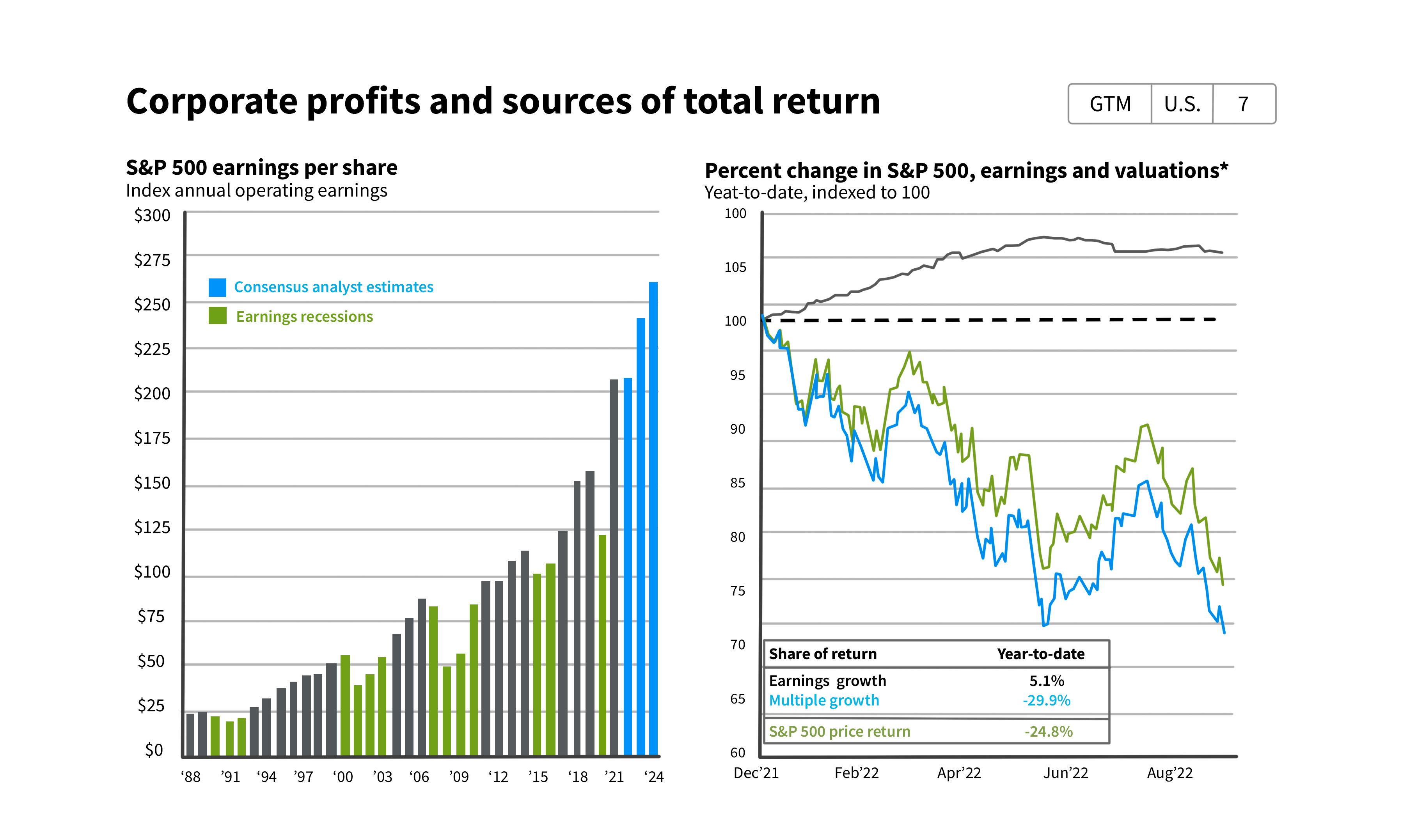
The profits of S&P 500 companies increased by 5% since the beginning of the year, but these profits are less valued and the PER applied to them fell by 30%. Nevertheless, this does not imply that the decrease is unjustified. It is normal for the PER to rise when interest rates fall and fall when interest rates rise.
We value a company by discounting these future profits. For example, we could bring back its future profits in dollars today and use a discount rate for that by simply increasing the discount rate from 7% to 8%. This has a significant impact on valuation, and this is what is happening right now.
Seeing as interest rates are rising, we will quickly raise the discount rates with Apple. At 7%, we find an intrinsic value of 133 dollars and 109 dollars at 8%. That is an 18% reduction by adding a point to the discount rate used. This is despite the fact that growth prospects are less promising than they were at the start of the year. As a result, we will use a higher PER when we anticipate large-cap growth and a lower PER when we believe growth will be slowed.
It is true, we are at levels that are quite appropriate to buy to begin entering the market, but we are not at extreme sales either. It is not Black Friday with really huge discounts because there is part of the discount that is justified, which is therefore justified in particular by the increase. Moreover, it is important to understand that the decline in company results is not justified. It is the way in which its results are valued that has decreased, not the results themselves.
American companies are still very good. It will be the justice of the peace in terms of valuation and it will be after these results that we will see to what extent the market is correctly valued or undervalued. When we discussed market variations, we separated those that are due to profit growth from those that are due to a drop in the multiples of results.
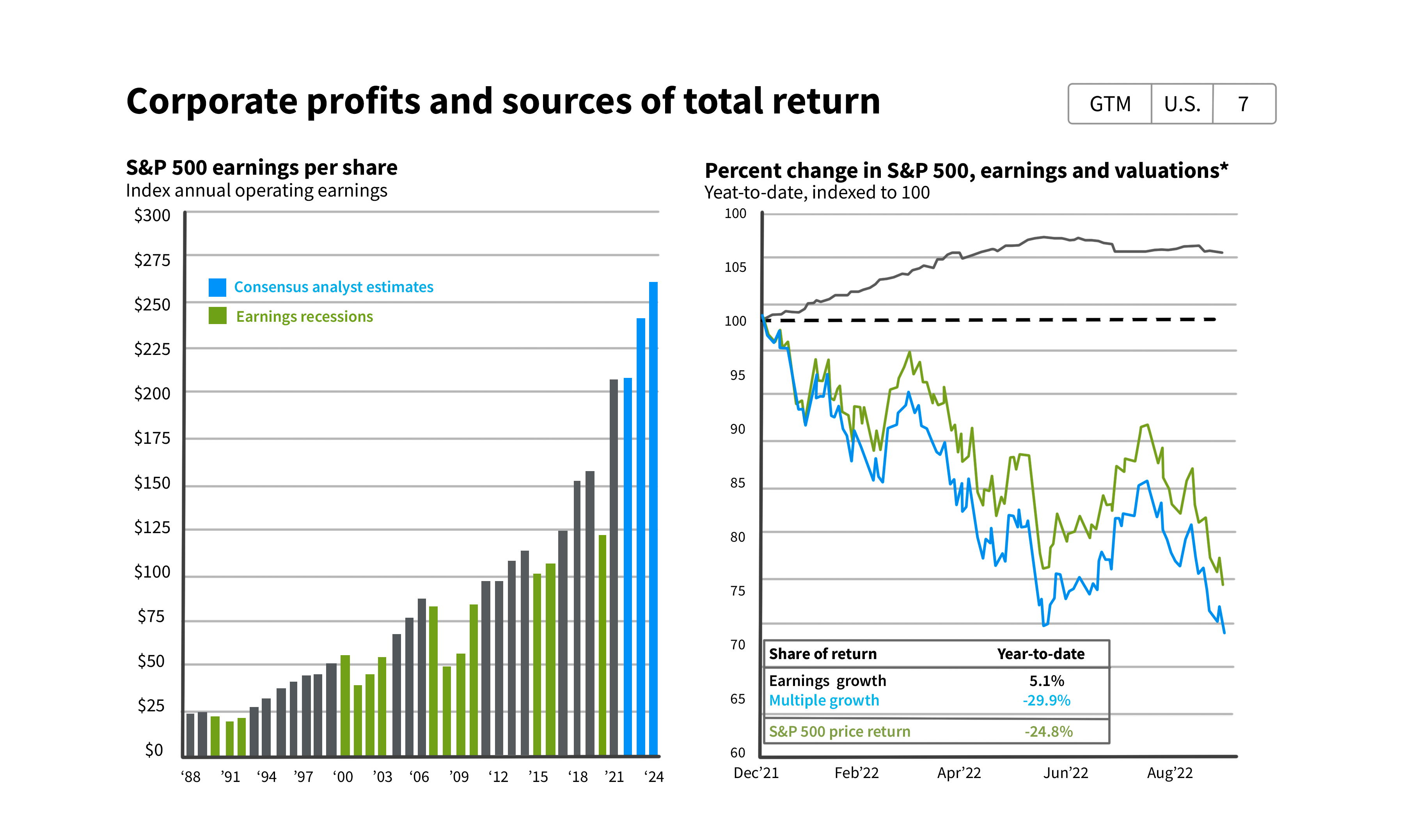
Let’s continue by dissecting this growth of the profits let's look at the growth of the earnings per share.

Growth in turnover.
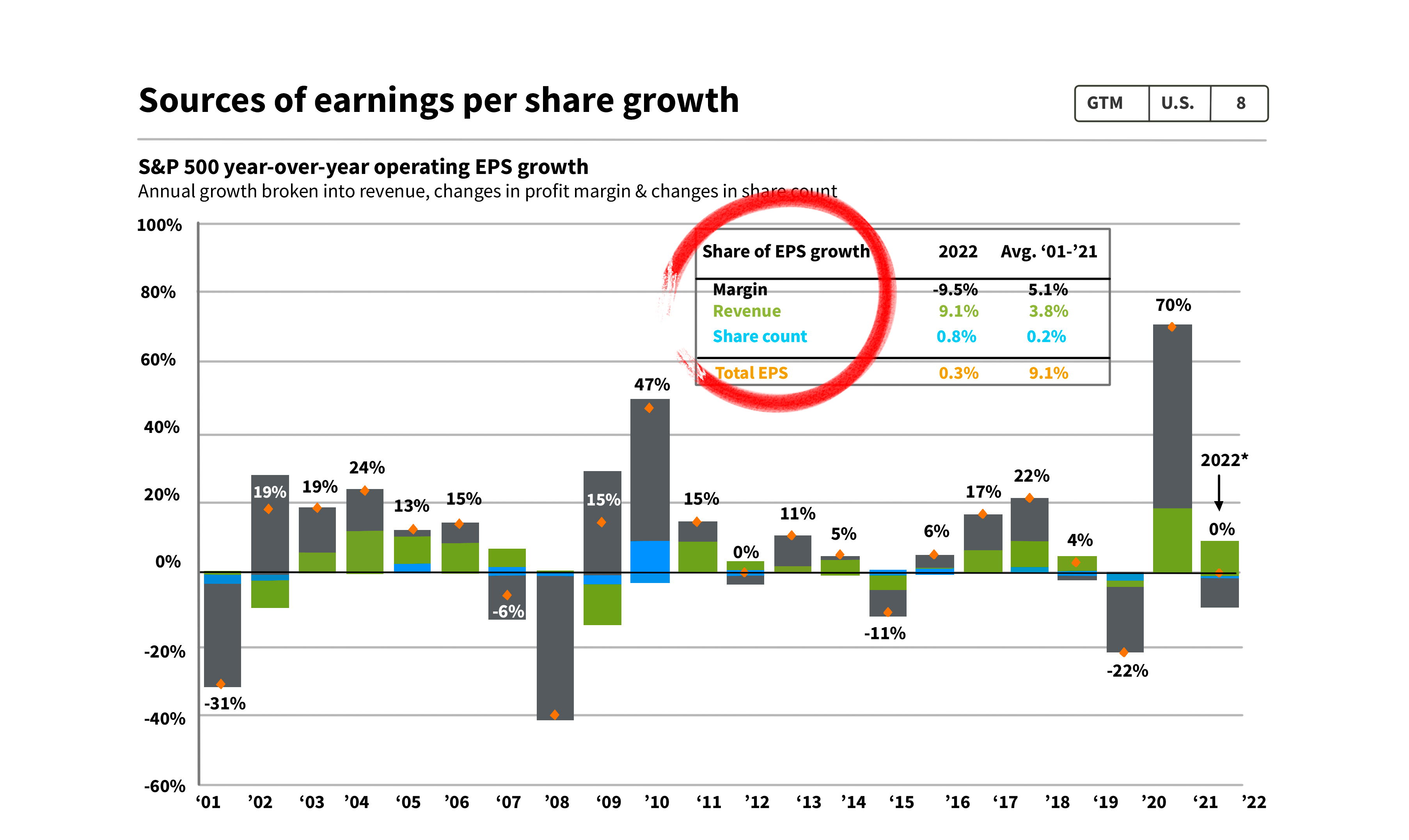
It is normal when we talk about growth in general. But if we talk about turnover, then it can be due to margin growth. Even at constant turnover, if you drop a lot well you can have a better profit and then it can be due to a reduction in the number of securities typically when a company makes share buybacks to simplify.
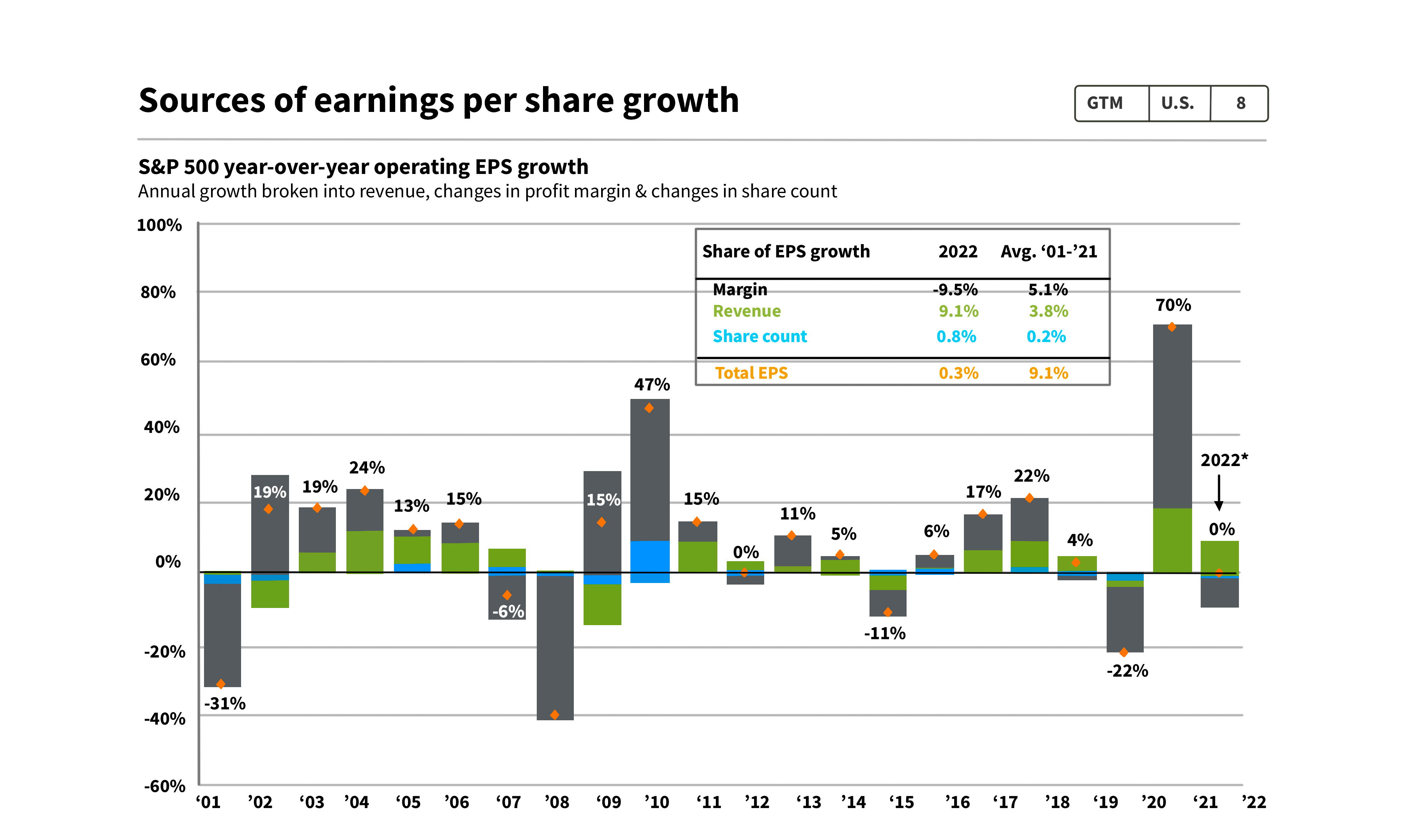
We can say that the increase in turnover is the cake that increases the margins as it is the price of the cake minus the costs of manufacturing it, and the number of shares is the number of slices of the cake that we are going to cut out. So share buybacks had a small positive effect of 0.8% in 2022, and the increase in turnover had a positive impact of 9%.
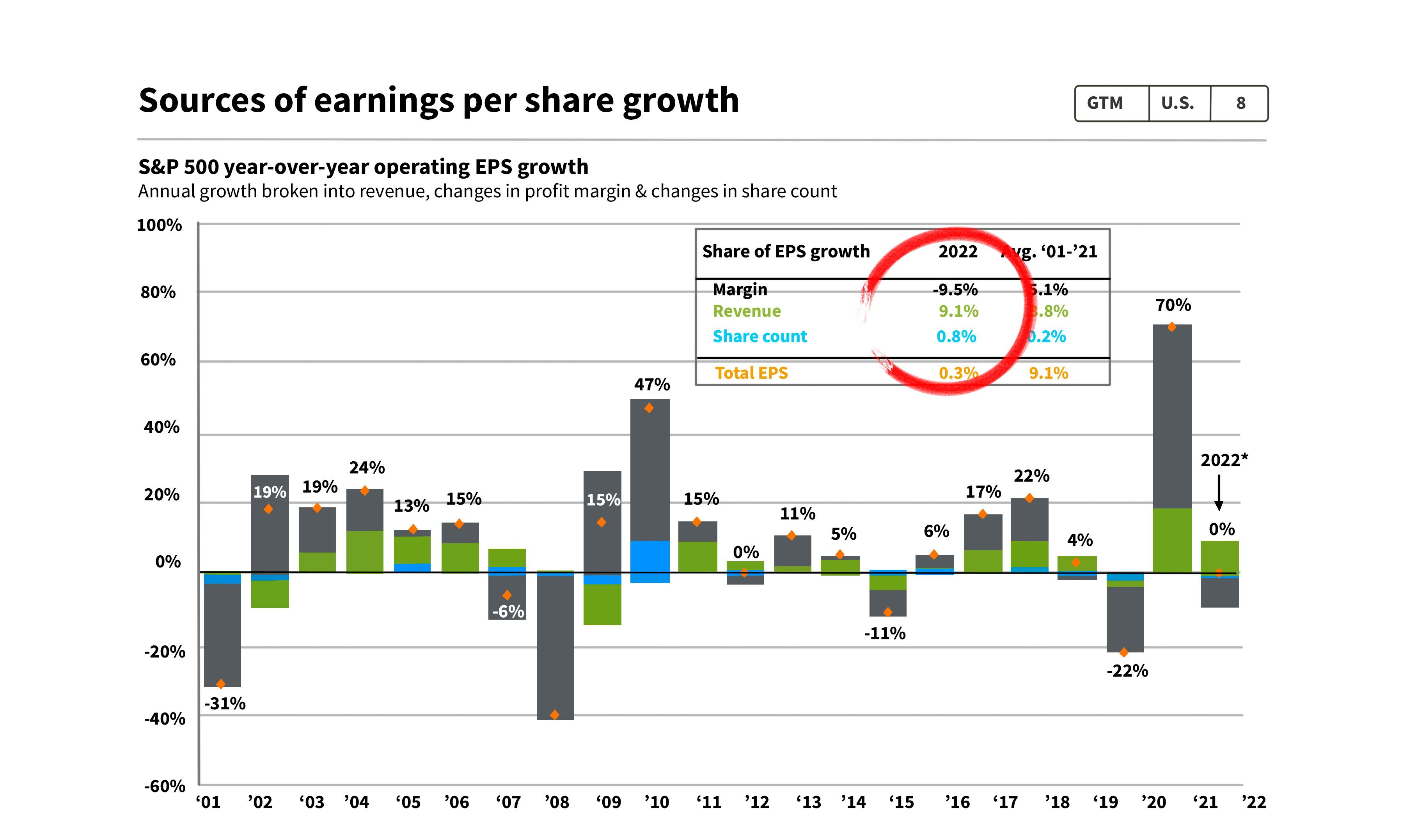
However, the margins had a negative effect of 9%, which may appear a little strange. It's very typical in times of inflation because companies raise their prices. This means, turnover rises, but costs rise as well, so wages, raw materials, transportation costs, and so on.
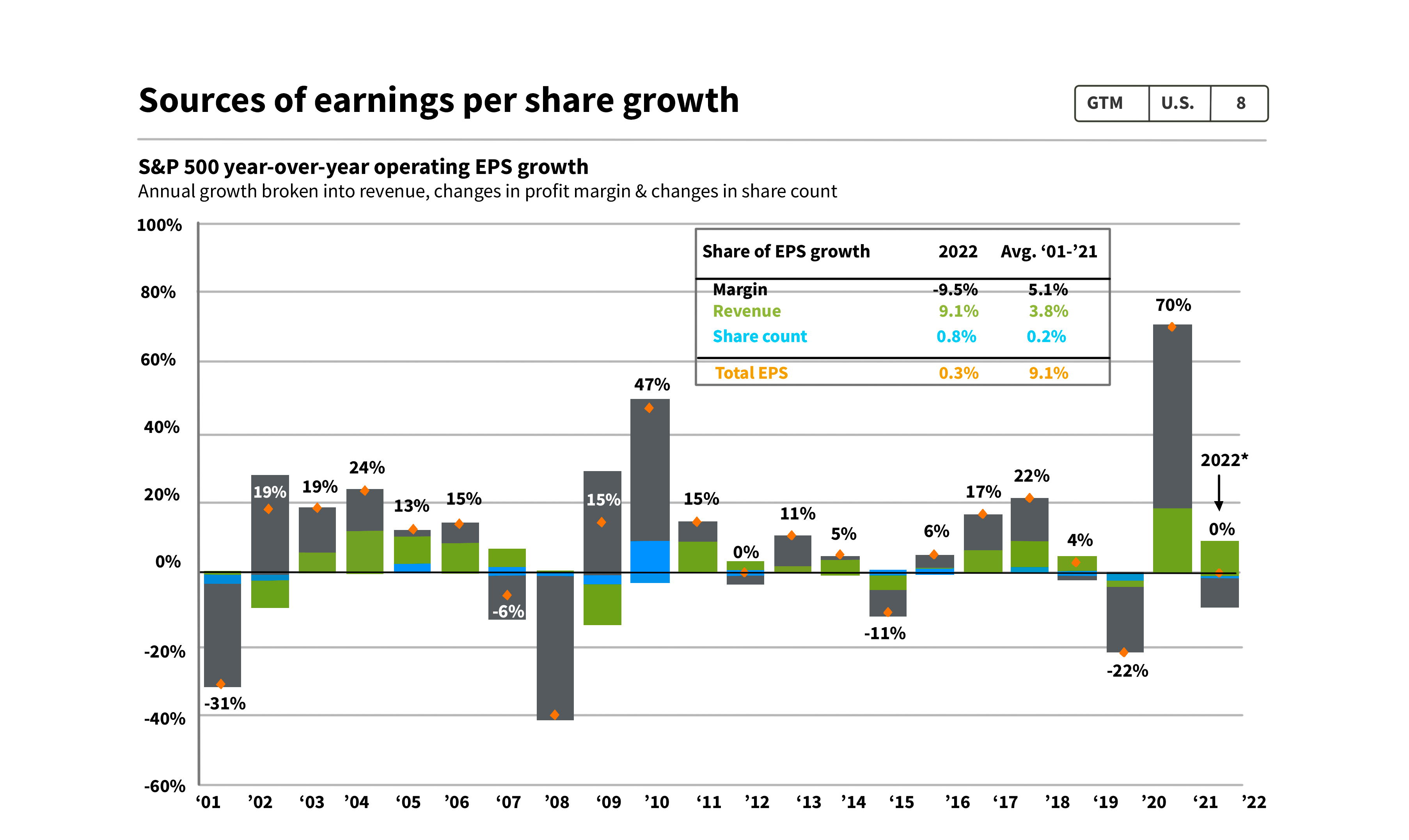
What is more surprising is it cancels out exactly. It is always preferable to look for companies with pricing power that can impose their prices.
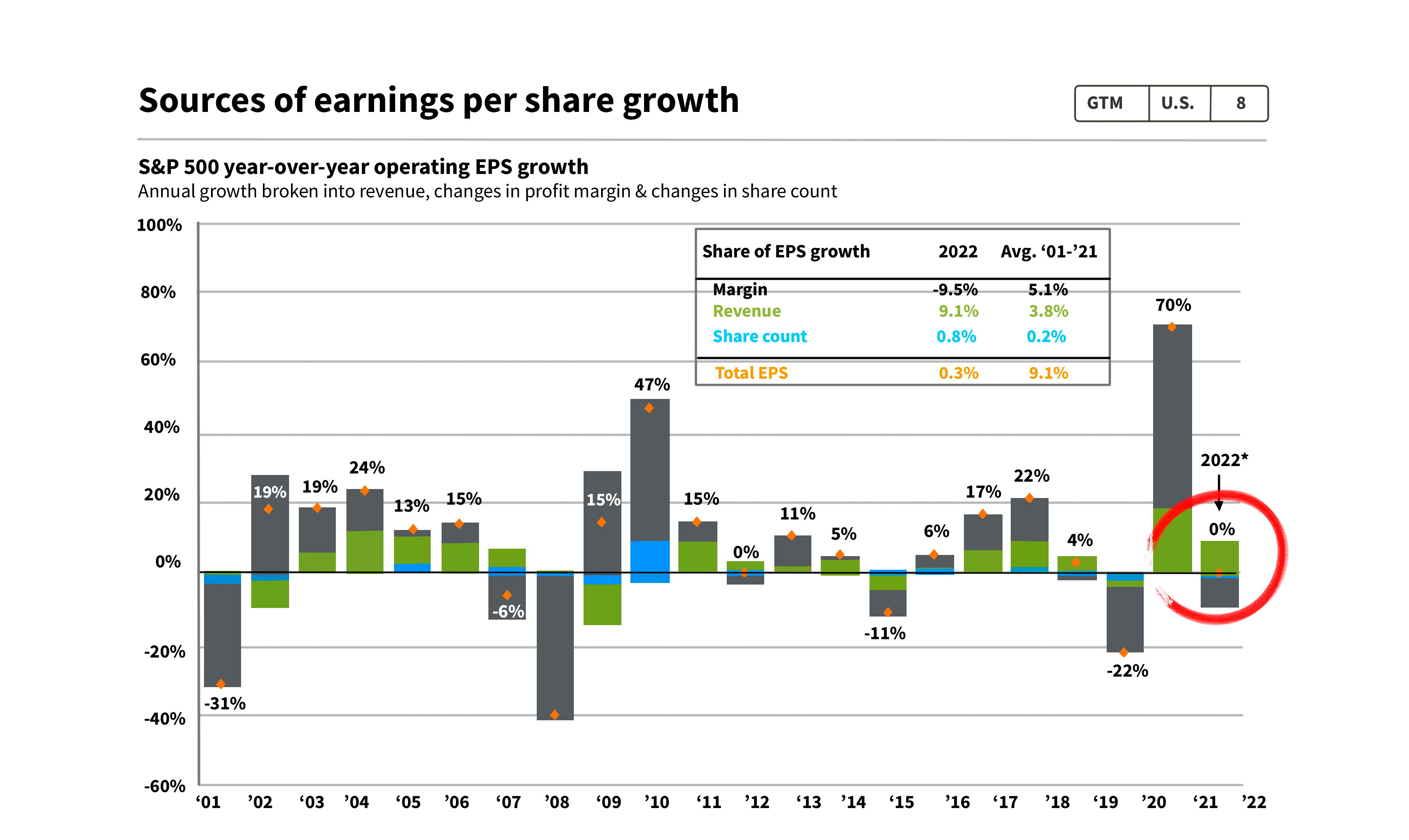
It is really essential in a period of inflation because we are talking about the average. What we're looking for are companies that manage to increase their turnover, i.e. pass inflation on to their prices, but have enough clout with their suppliers, or simply have low enough costs to limit their increase. Thus, manage to maintain their margin.
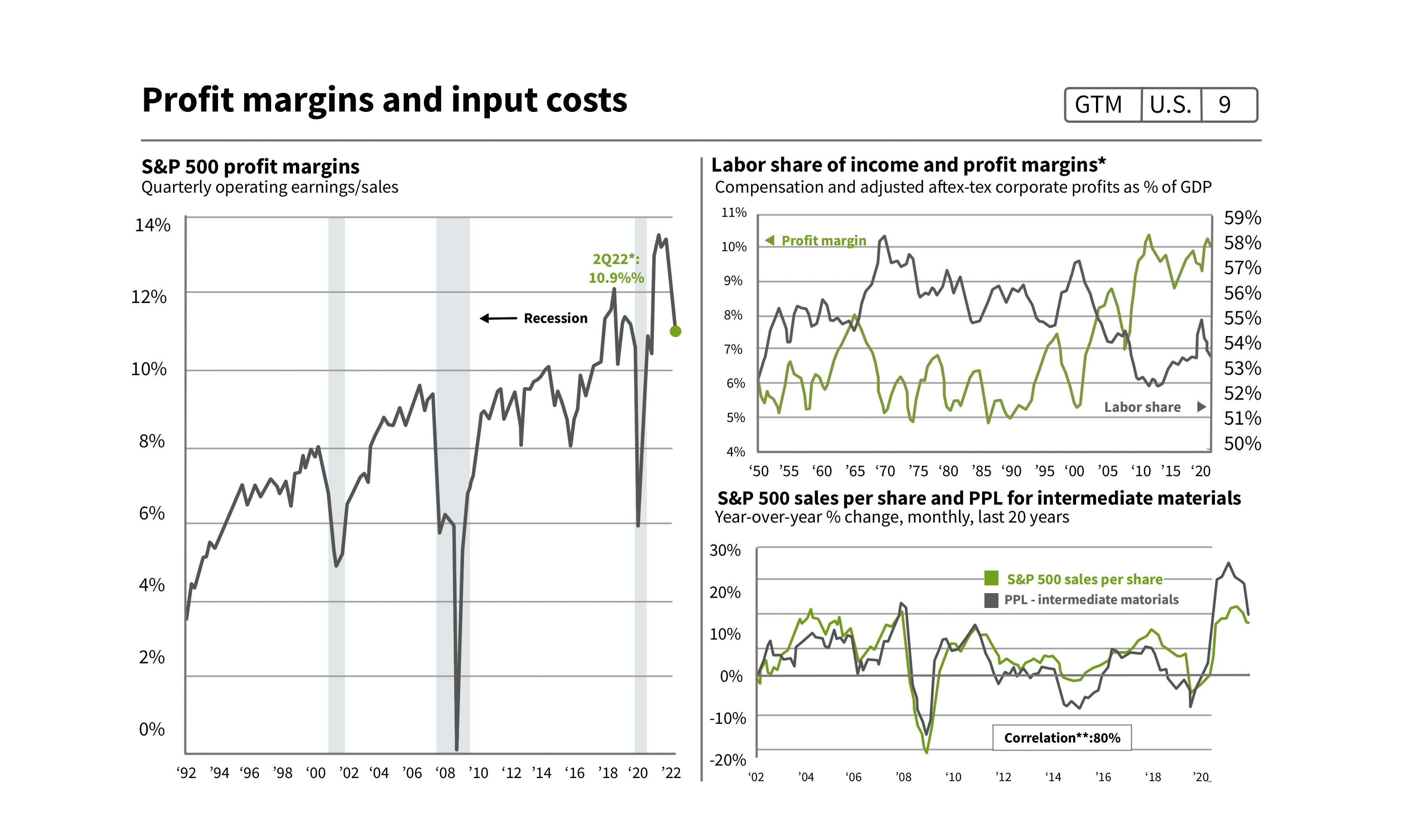
They have been reduced and we have seen it for S&P 500 companies since the beginning of the year. But we are still at very high levels and we are today with an average margin of 11% whereas historically we have rather margins of 8-9%.
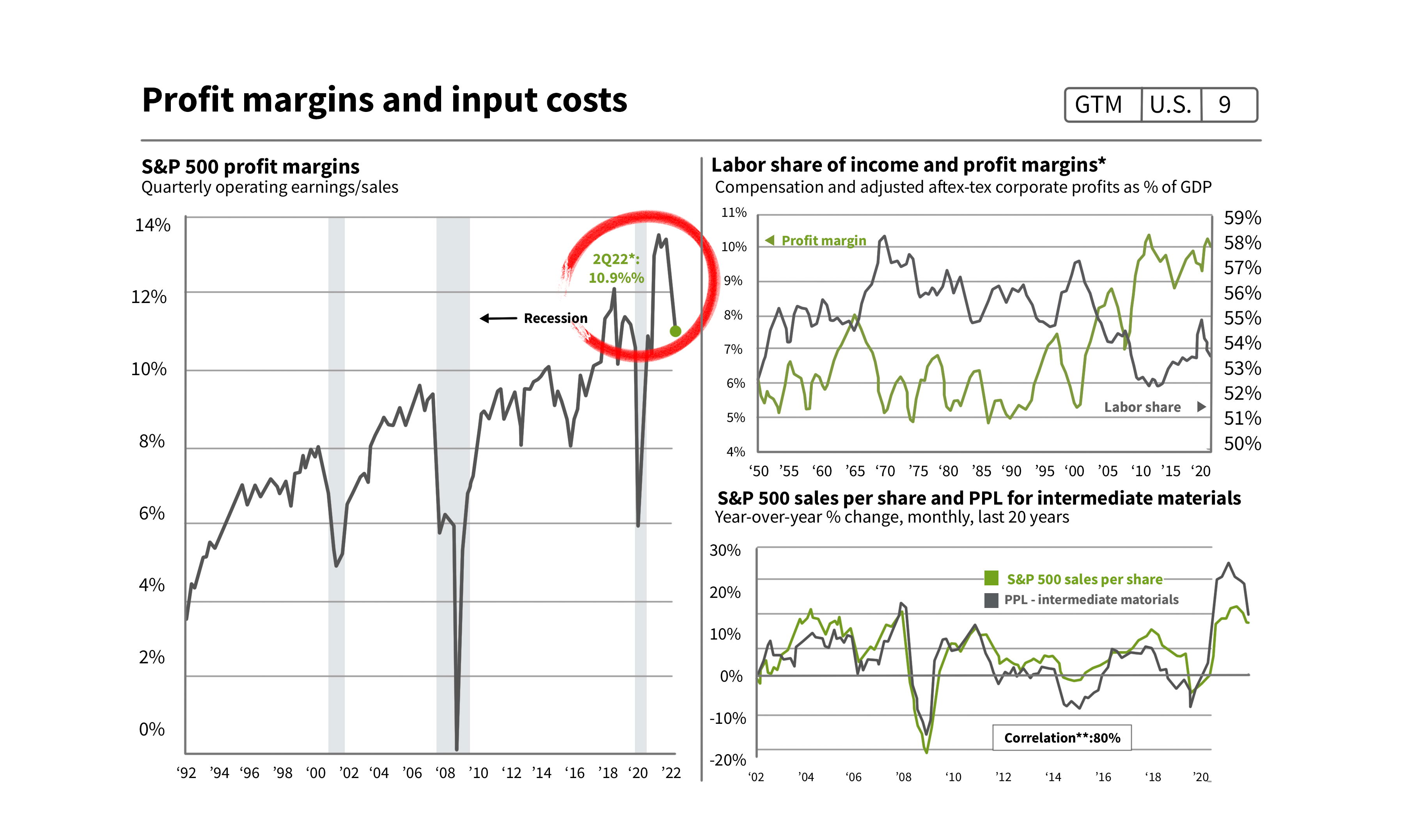
We've seen the 25% drop, but that's not enough to say it's a low point as we've also seen the valuation.
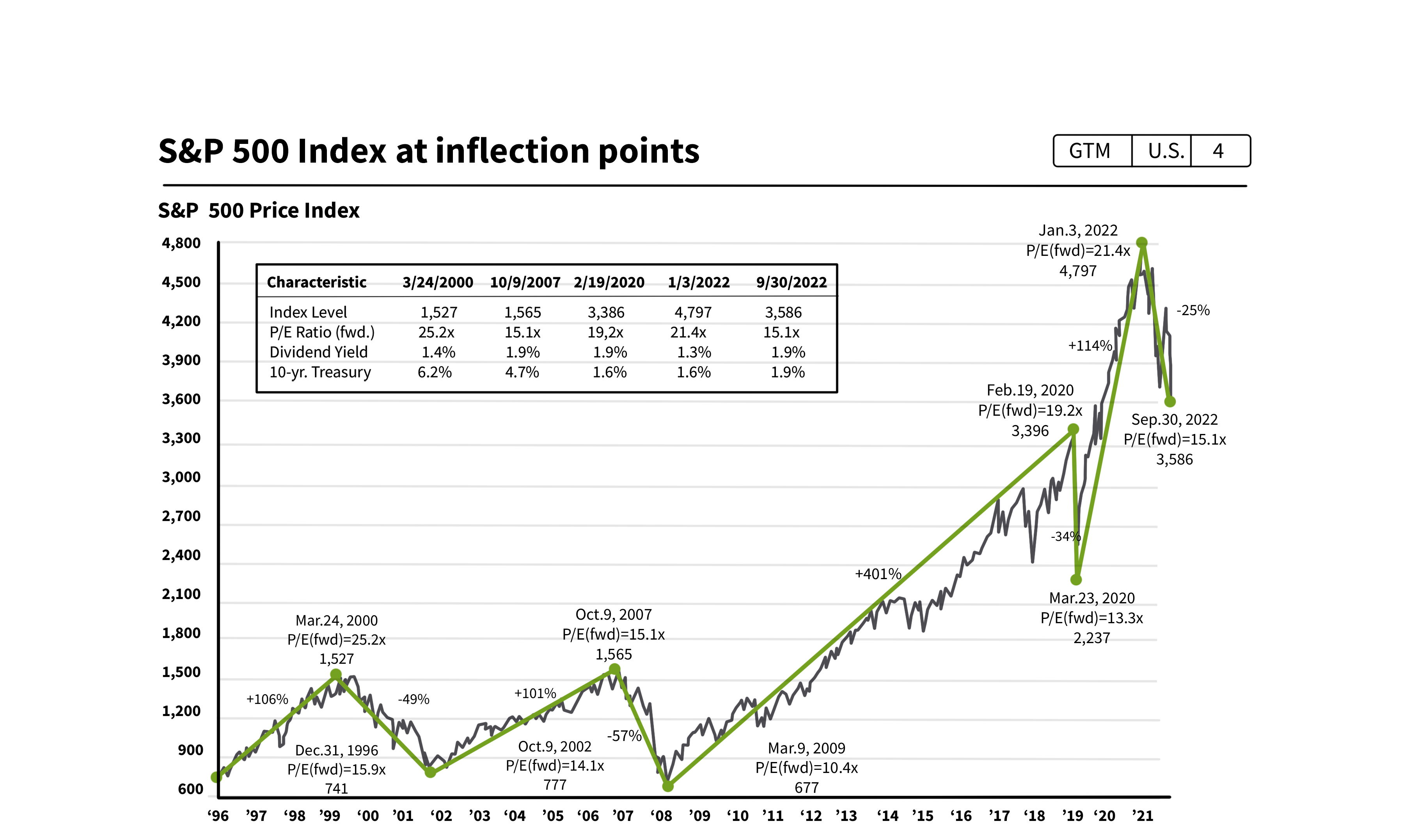
We can see that the valuation does not show a particularly low point.
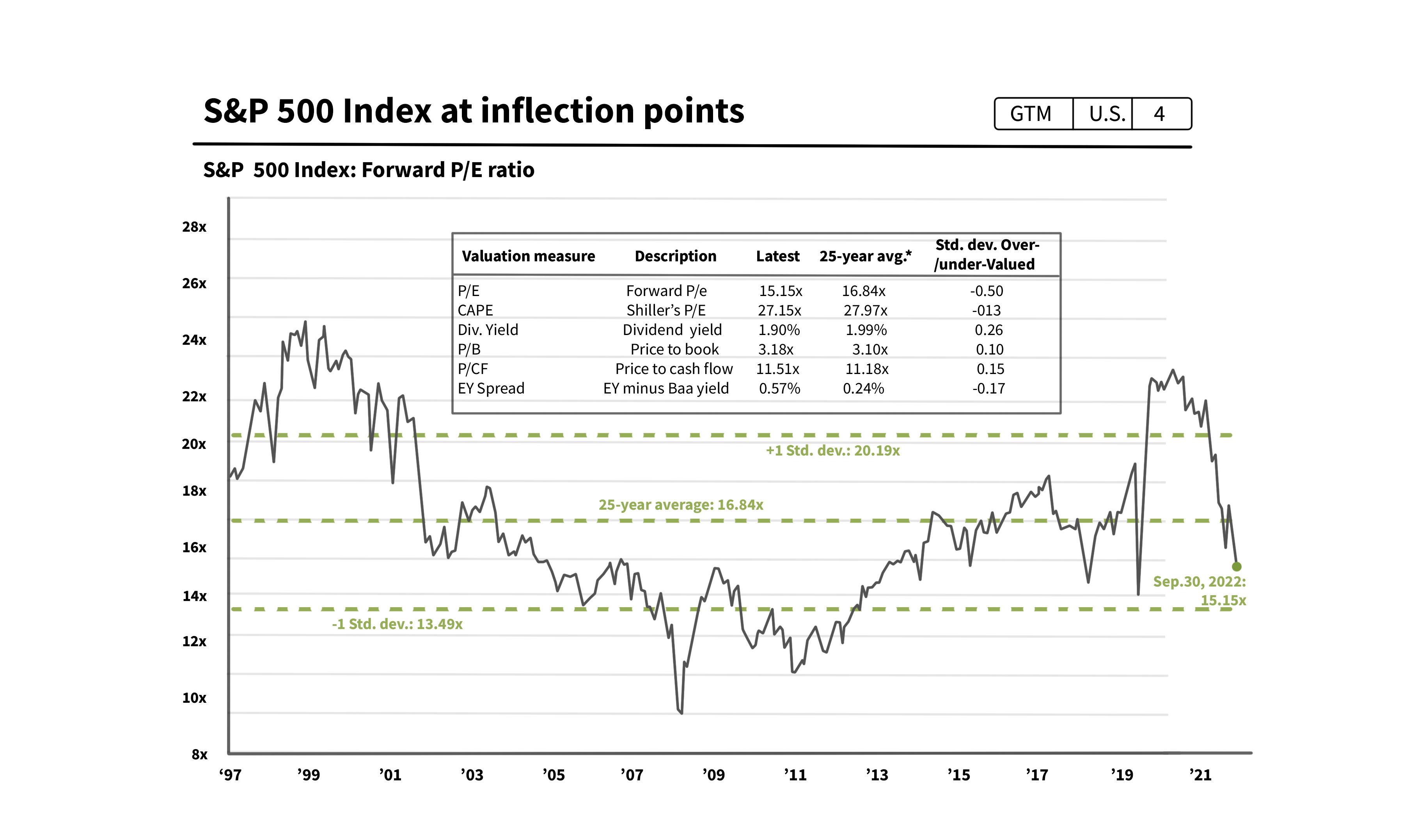
We enter low areas but we are not on a low point that allows us.
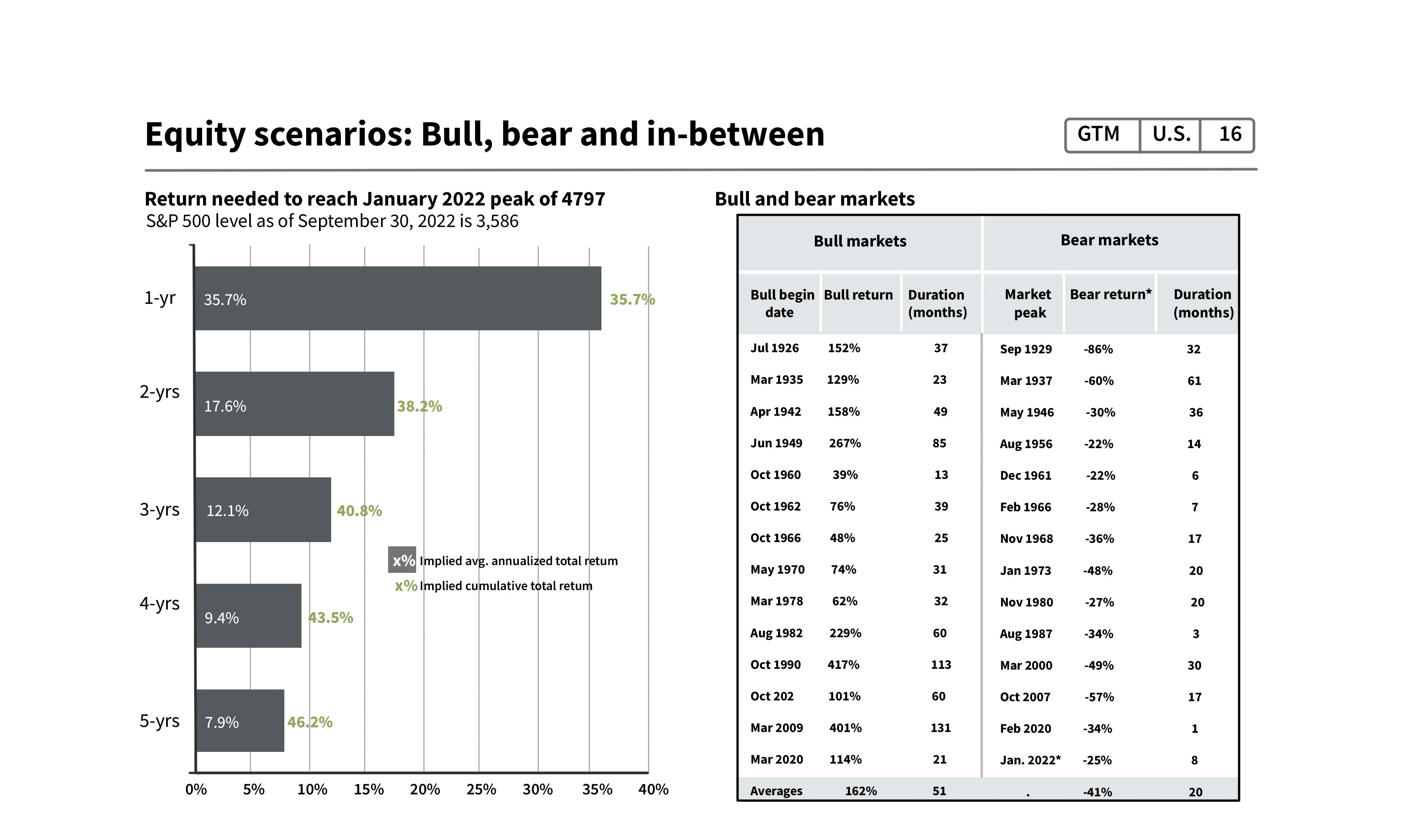
To say with certainty that, we can buy another means by looking at previous bear markets, and we see it pass regularly on social media. It's interesting to look at previous bear markets because it's not about finding the lowest point, which is impossible, but it can remind us that a market can fall for a long time. They were very fast Since the last ones are looking for the last bear market we had.
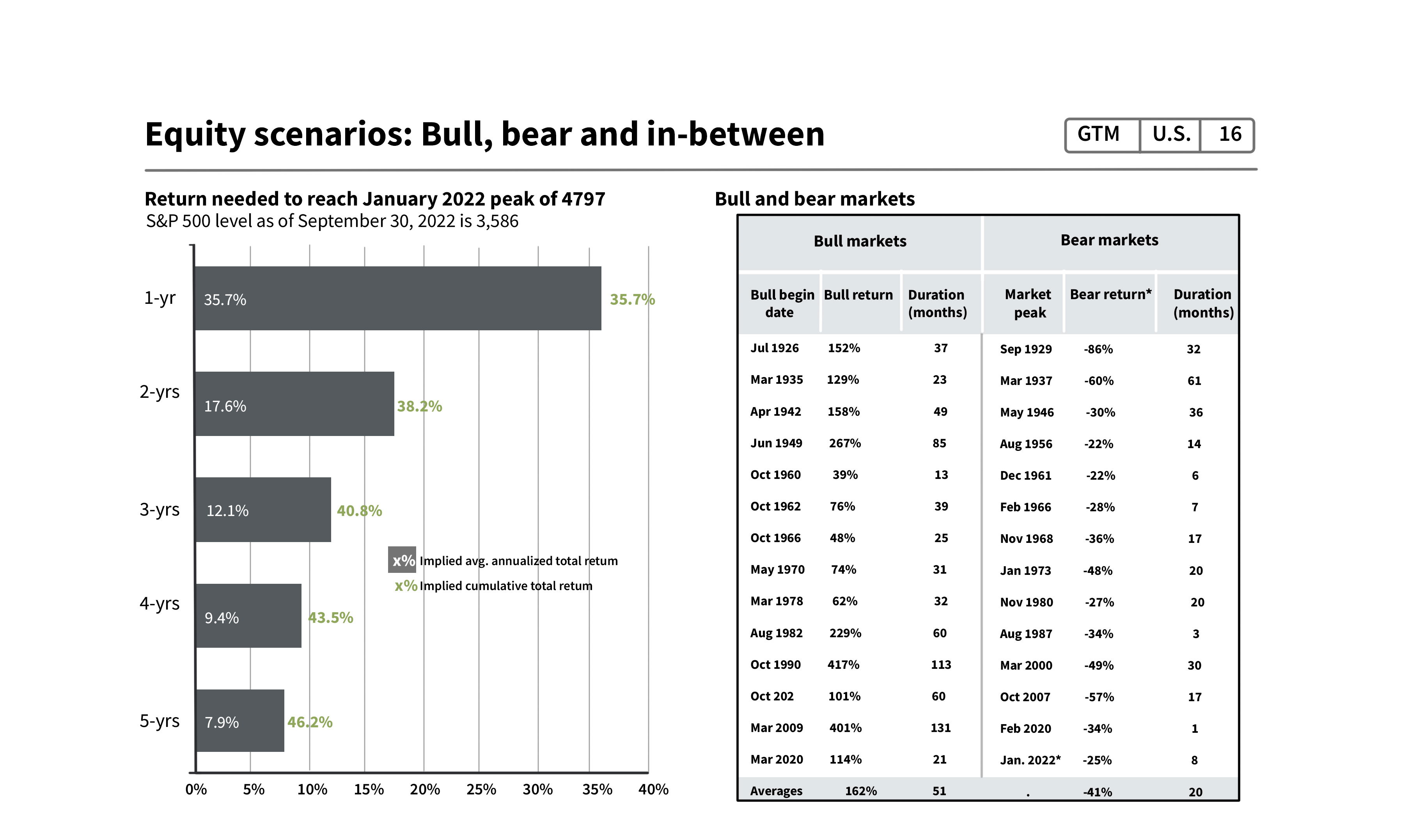
We had 17 months in 2008 with a 50% drop in prices, and we had a month during the covid which was really a very fast crisis, but we must not forget that in 2000. For example, the market dropped by 50% in 30 months.
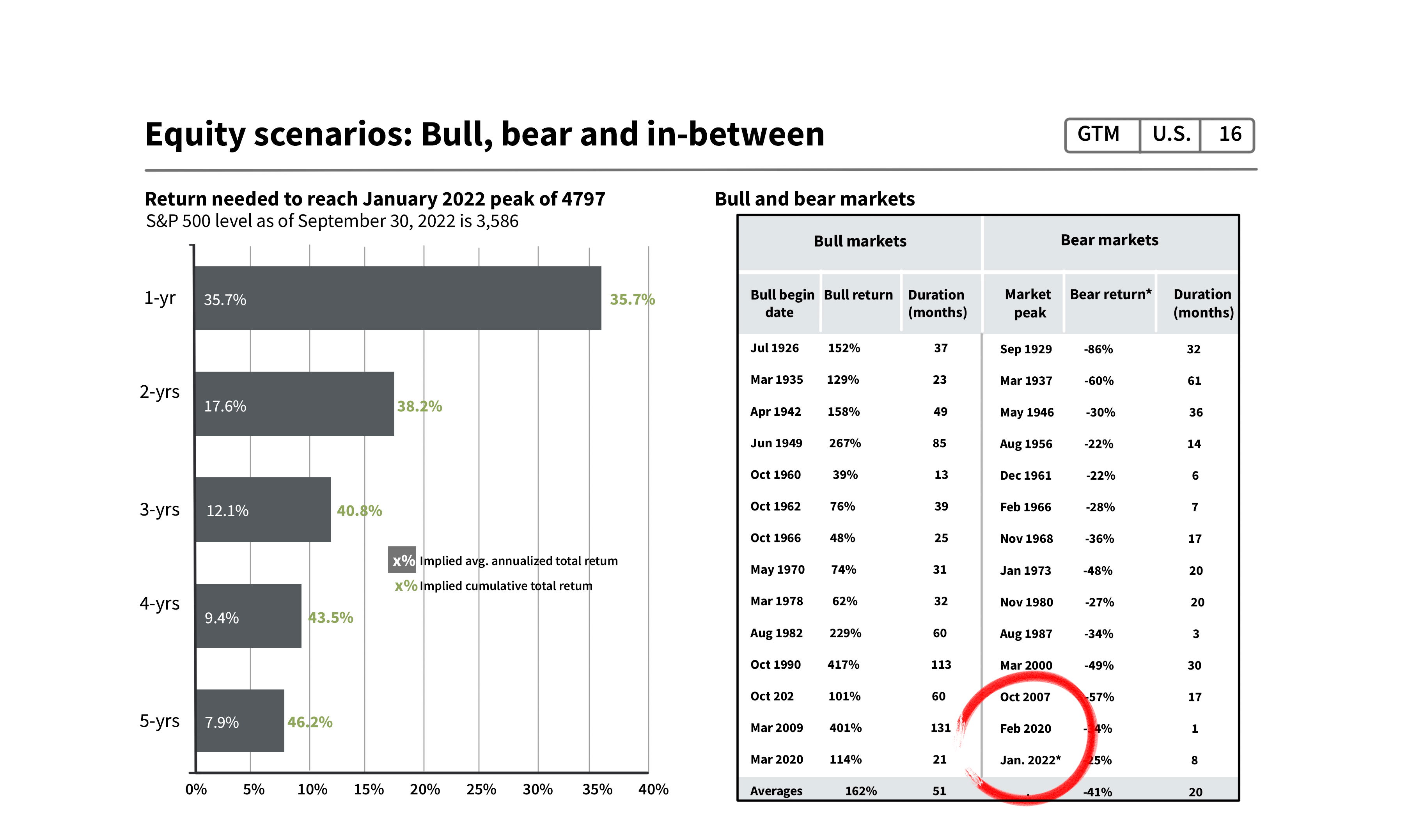
Historical bear markets do not provide any useful information. One interesting point is that we can try to look at when the inflection point in these products occurred at the end of these bear markets in comparison to the recession.
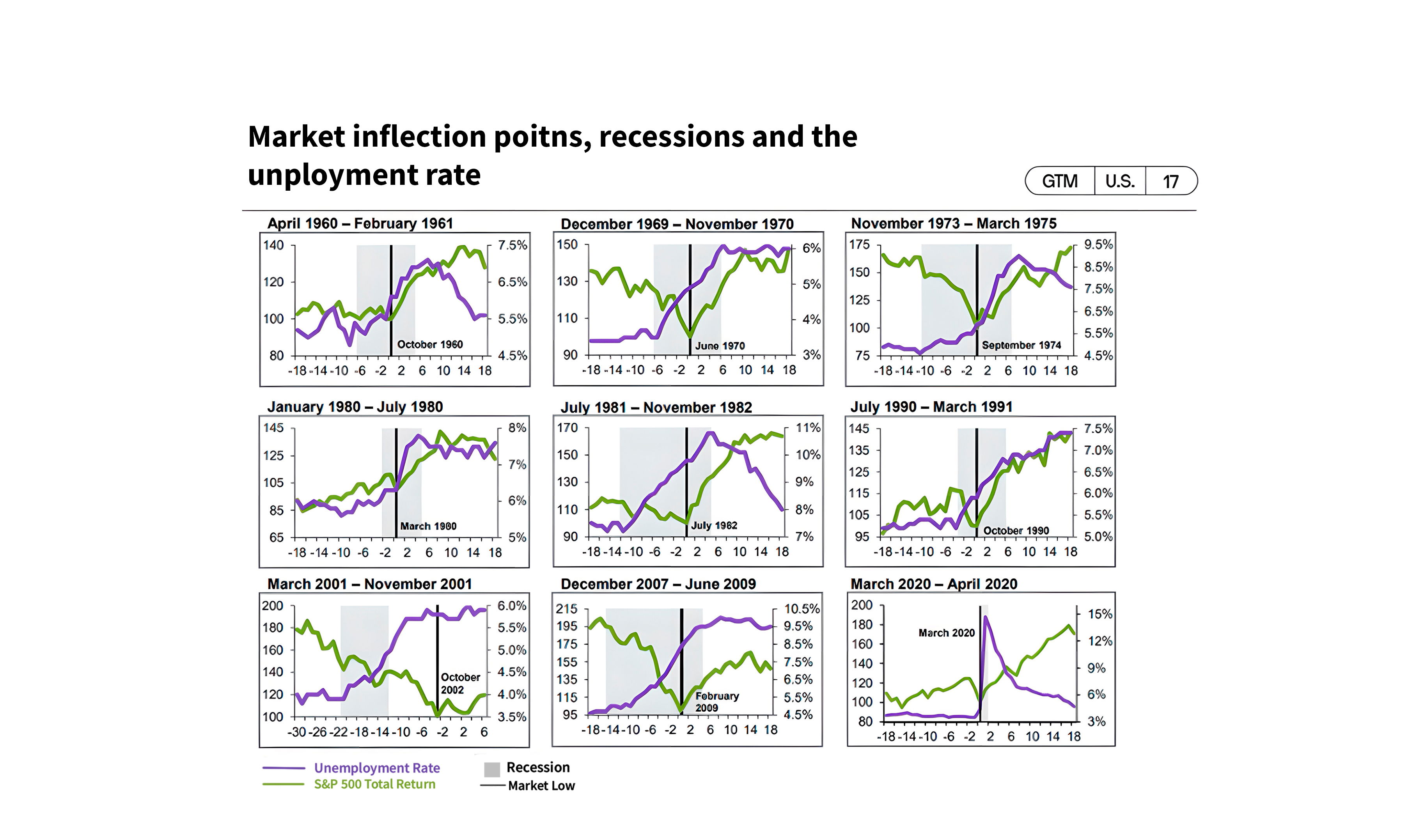
We can see that for those with the image on this point of inflection, it frequently occurs in the midst of a recession. Taking this point, we can conclude that the low point is still ahead of us. If there is a recession, we are most likely not in the midst of it, and the problem with such timing is that recessions are announced late. Only when we measure do we realize we were in a recession quarter, and this is not something that allows us to predict the future. As a result, this point of inflection gives us the impression that the low point is ahead of us.
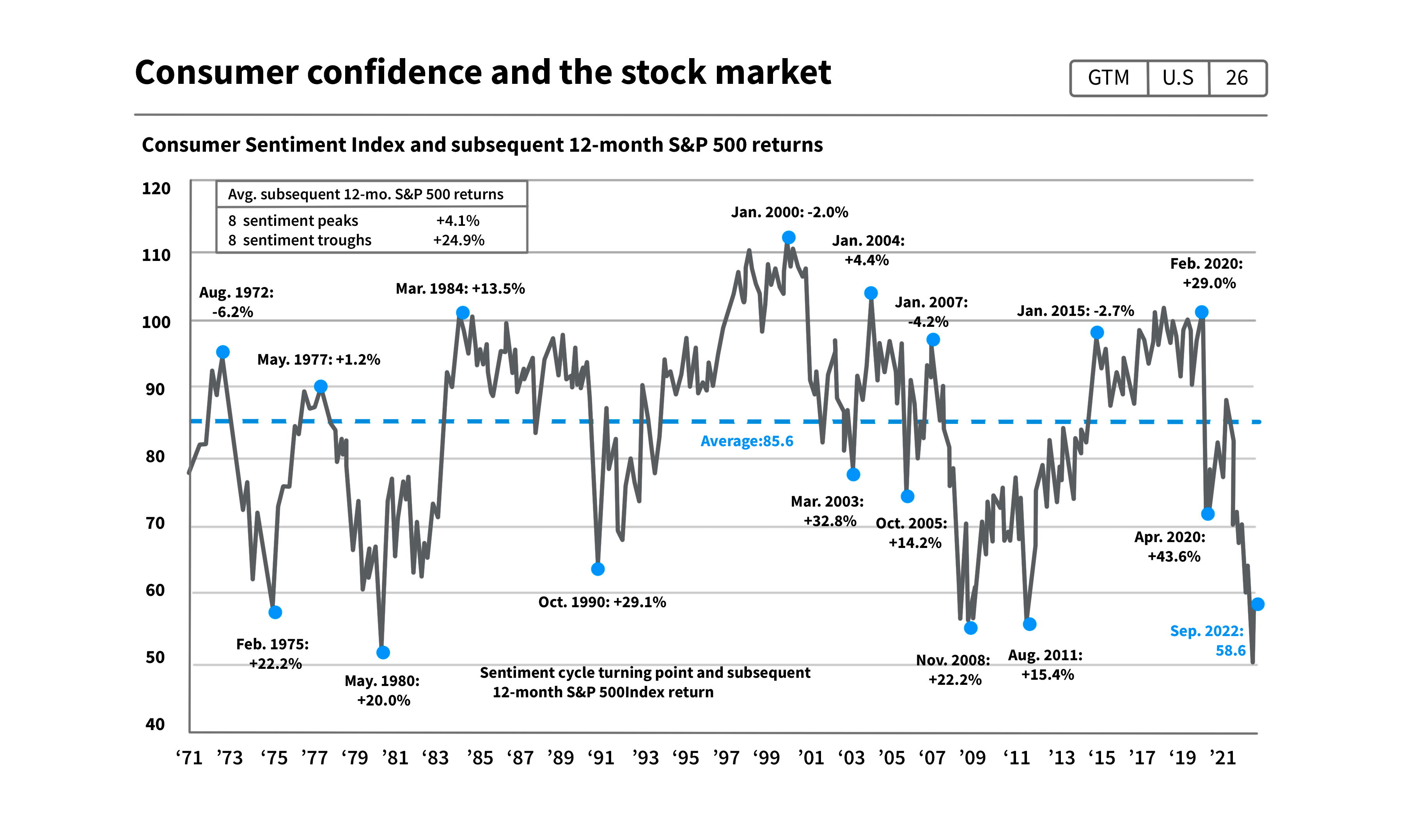
The best tool is the level of consumer confidence, investor confidence, etc. That is always an upsetting index, which implies that when consumers and investors are most depressed, we are often at a low point. These indicators have only recently reached historic lows. This leads us to believe the opposite of what we saw on the valuation and what we saw on the averages. As an outcome, these two indicators lead us to believe that the low point was only momentary, and our level of confidence leads us to believe that we are not far from a low point. We had one indicator that said it would be 20% lower in 6 months, and another that said it was already at its lowest point.
Overall confidence indicators are much more reliable in terms of timing, whereas Valo indicators or even historical inflection points are not. There is too much variation in the future in terms of timing. However, it is critical to continue saving and investing every month. During these times, it is determined by your personality.
There are two things that we tend to say to ourselves: This is the low point for those who are impatient, so we tend to put in €300 per month to accelerate the investments. On the other side, there are others who, on the contrary, are afraid and say to themselves, "I'm quitting " during these periods of crisis and stop putting in €300 per month. Based on the studies, when you invest in this manner, by putting money aside each month, you must not stop, especially not in times of crisis. We are not trying to catch the low point, but we can smooth out and spread out, which we will inevitably have.
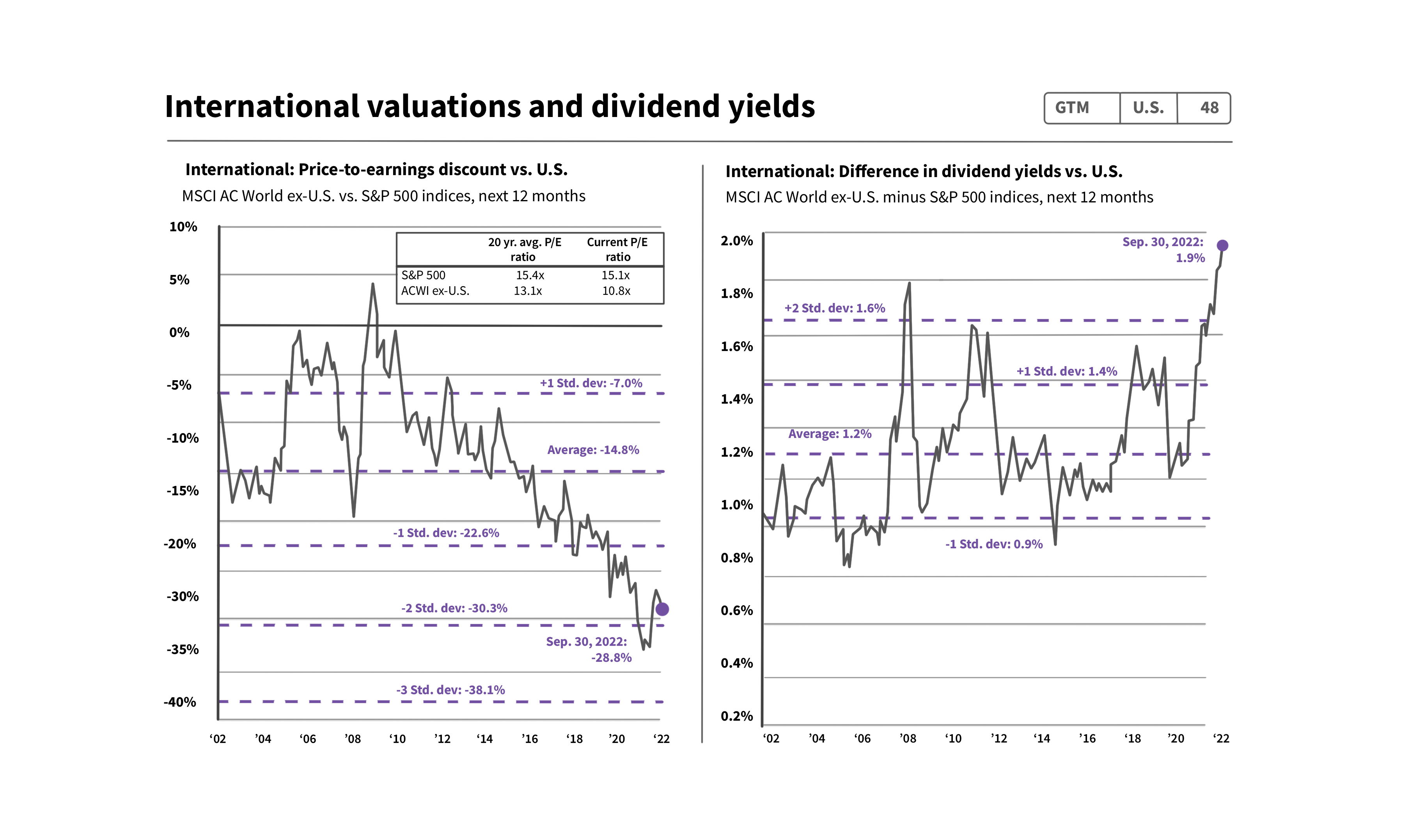
Let us zoom out from the United States to see how the United States compares to the rest of the world.
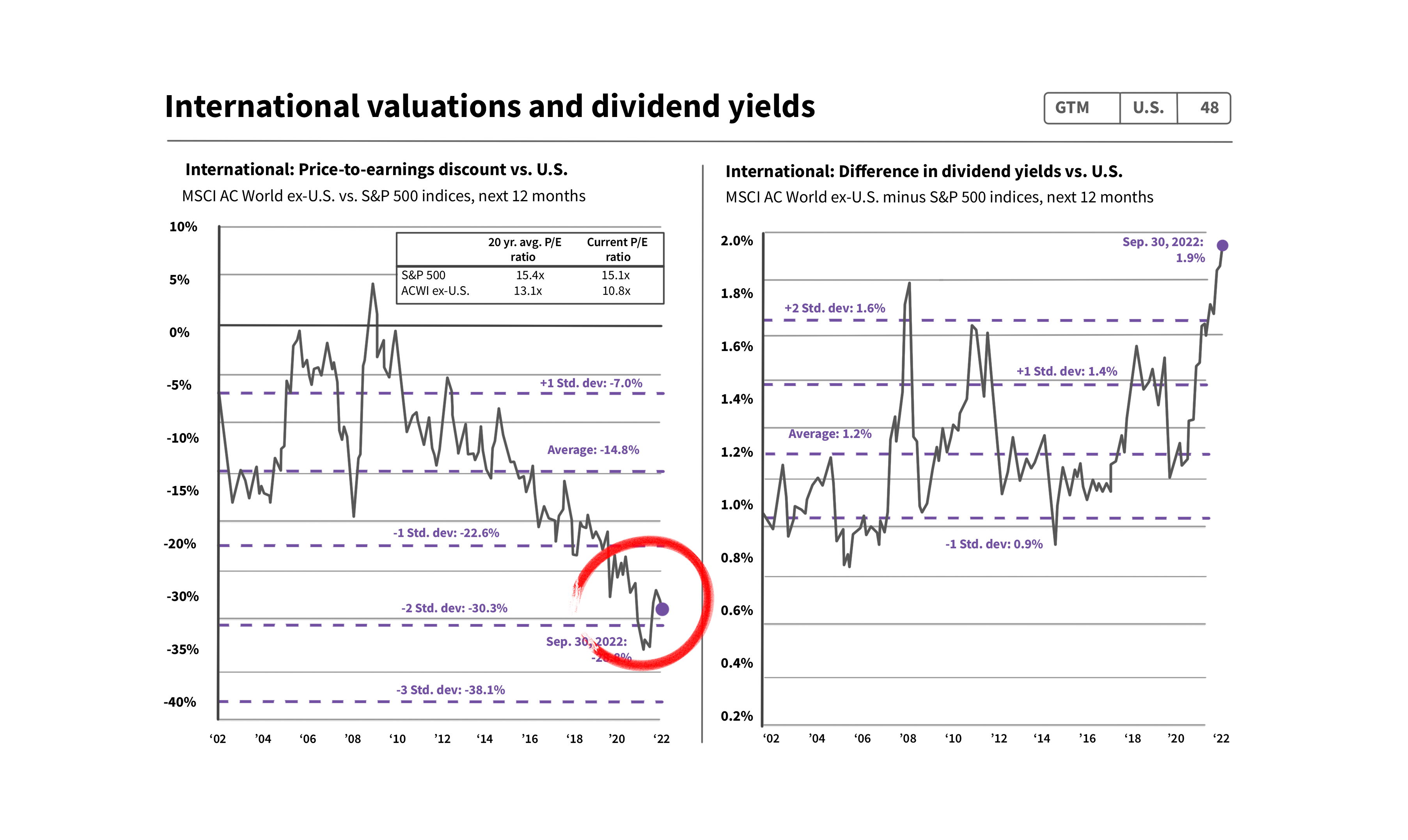
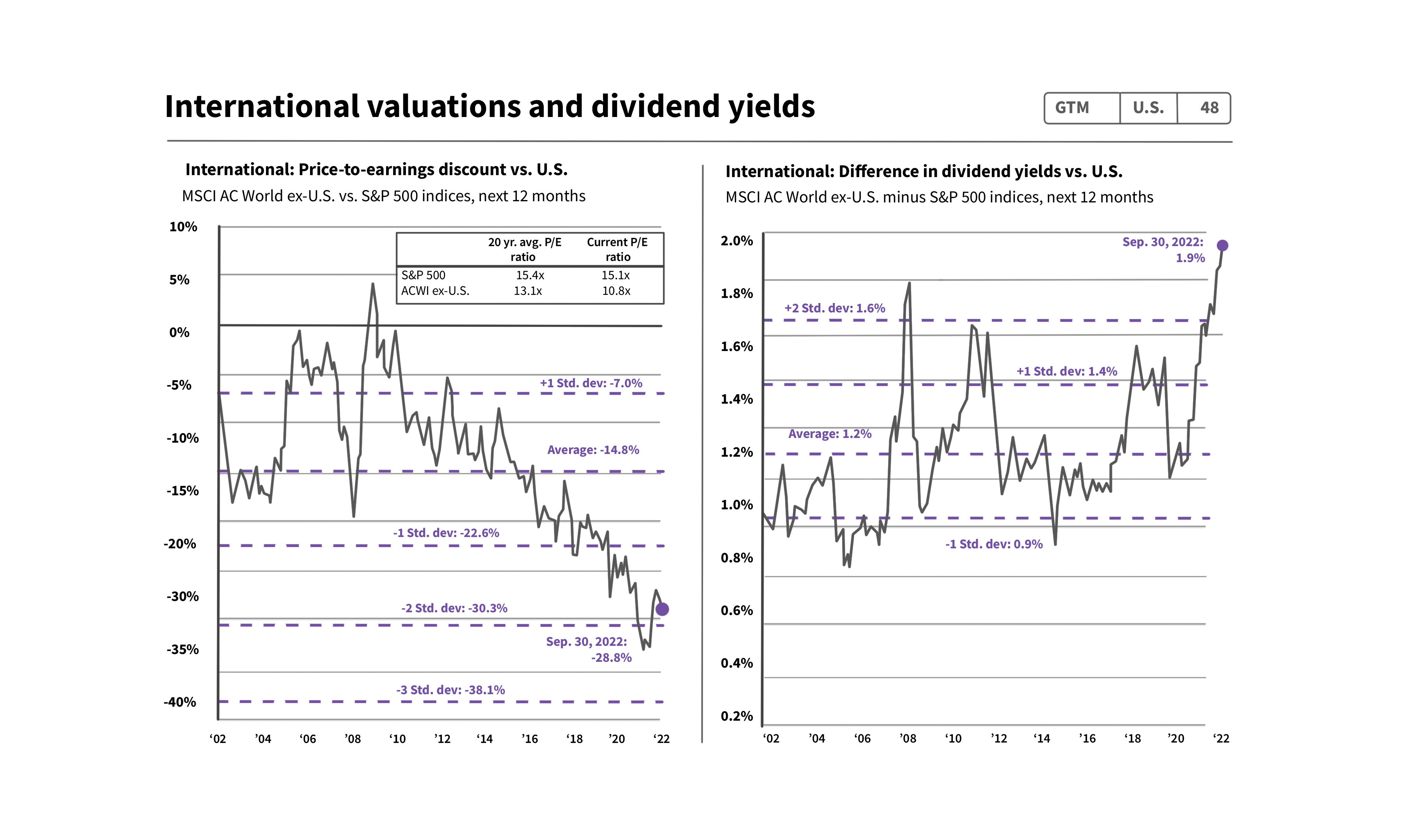
The United States appears to be constantly compared to the rest of the world, and we have this famous PER of 15. We have seen it in the United States, and it is 10.8 for the rest of the world. The United States already has a historical PER that is higher than Europe or even Asia.
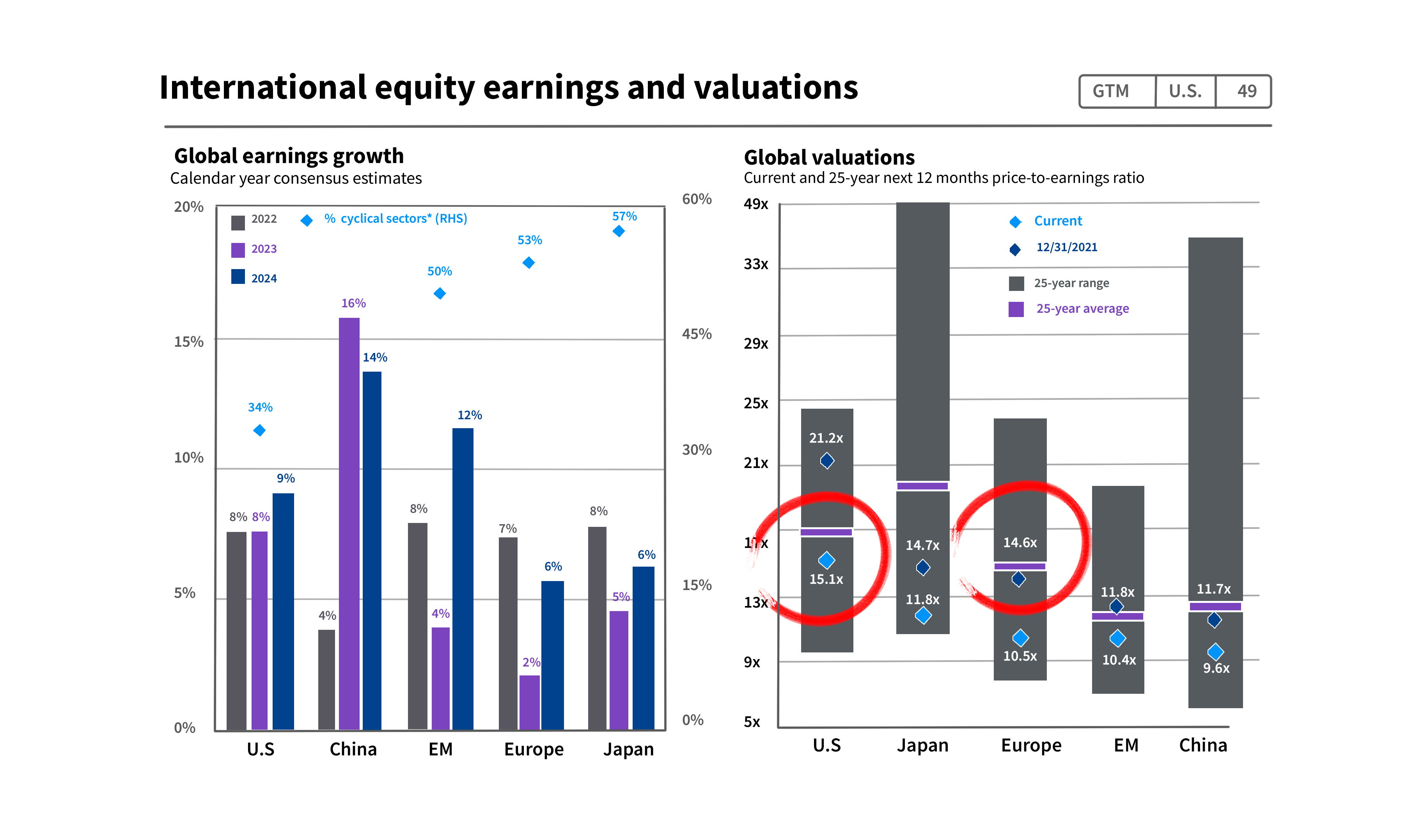
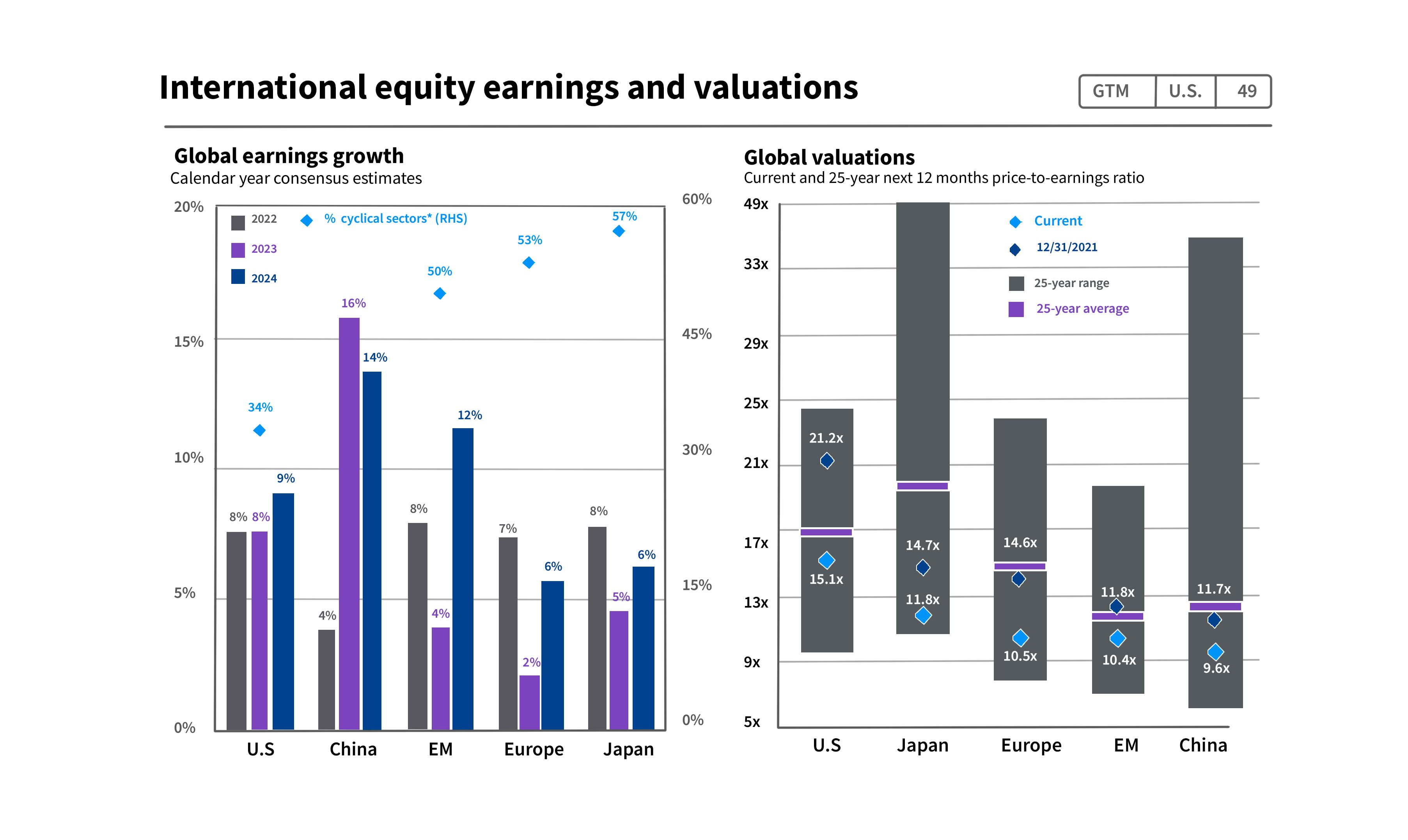
It is not an indication that they are necessarily undervalued. But it is true that historically, the United States and the rest of the world have been closer than that. However, we don't know what the future holds. It has always been a good way to invest. There are false rebounds, etc., in a market that is a little unique and a little shaken. Let's just hope we're not far from low levels, or that if we aren't now, we will be in the coming months.
Key Takeaways:
1. The news of the markets is more interesting than the news itself.
2. The estimated PER on earnings has decreased from 21 to 15, indicating that we are approaching a buying zone.
3. The drop in the stock market index is a combination of -30% due to the drop in multiples due to the drop in PER and +5% due to the result.
4. It is normal for the PER to rise when interest rates fall and fall when interest rates rise.
